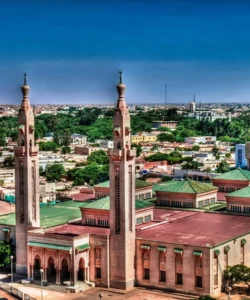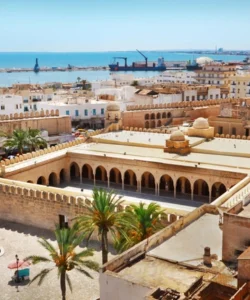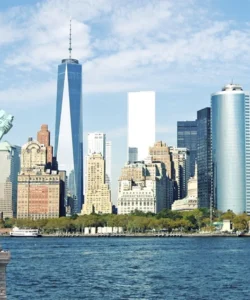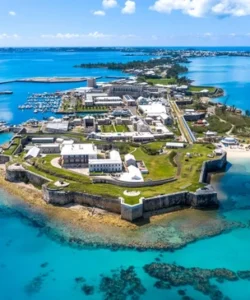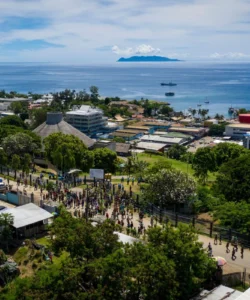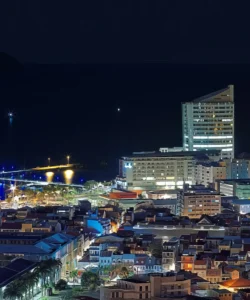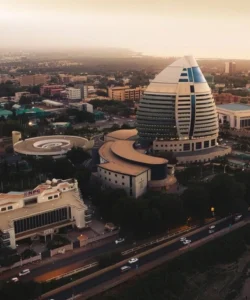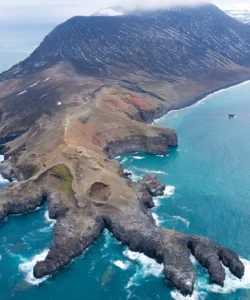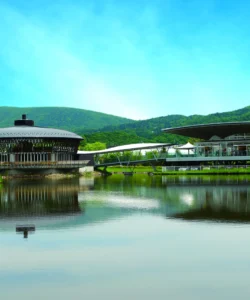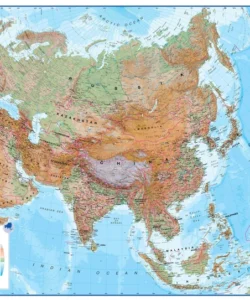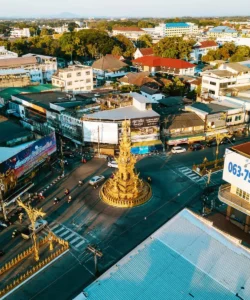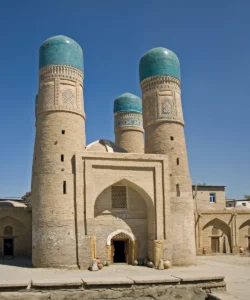Brunei, officially known as Brunei Darussalam, is a small yet fascinating country located on the island of Borneo in Southeast Asia. It is renowned for its abundant oil and gas reserves, which have contributed to its high standard of living and impressive Islamic architecture.
Listen to an introduction about Brunei
![]()
Area: Approximately 5,765 square kilometers (2,226 sq mi).
Population: Around 458,949 (as of 2023).
Language: The official language is Malay, but English is also widely spoken, especially in business and tourist areas.
Currency: Bruneian Dollar (BND). The Bruneian Dollar is pegged to the Singapore Dollar at a 1:1 ratio.
Religion: The official religion is the Shafi’i school of Sunni Islam. The constitution allows other religions to be practiced “in peace and harmony.” The majority of the population is Muslim (around 82.1%), followed by Christian (6.7%) and Buddhist (6.3%).
Capital: Bandar Seri Begawan.
Major Cities: Besides Bandar Seri Begawan, other municipalities include Kuala Belait, Seria, and Tutong.
Attractions:
- Sultan Omar Ali Saifuddien Mosque: An iconic symbol of Brunei, this royal mosque is a stunning example of Islamic architecture, especially beautiful when illuminated at night.
- Jame Asr Hassanil Bolkiah Mosque: A contemporary architectural masterpiece with glistening domes and soaring minarets.
- Kampong Ayer (Water Village): Often referred to as the “Venice of the East,” this unique floating village offers a glimpse into traditional Bruneian life. Visitors can explore by water taxi and visit the Kampong Ayer Cultural & Tourism Gallery.
- Royal Regalia Museum: Houses an impressive collection of royal artifacts, including the chariots used during the Sultan’s coronation.
- Istana Nurul Iman: The official residence of the Sultan of Brunei and the world’s largest residential palace. While generally not open to the public, its majestic exterior can be admired from afar, and it’s open during Hari Raya celebrations.
- Malay Technology Museum: Offers insights into the local heritage and traditional way of life of the Malay people.
- Gadong Night Market (Tamu Gadong): A vibrant market offering a variety of local street food and goods.
- Ulu Temburong National Park: A pristine rainforest accessible by boat, offering adventurous treks, canopy walks, and a chance to experience Brunei’s rich biodiversity.
- Jerudong Park: An amusement park that was once one of the most expensive in the world.
- Tasek Lama Recreational Park: A popular spot for hiking and nature walks.
Wonders: While Brunei doesn’t have officially recognized “Wonders of the World,” its natural beauty (especially in Ulu Temburong) and architectural marvels (like the mosques) are certainly awe-inspiring.
Architecture: Brunei’s architecture is heavily influenced by Islamic design, with mosques being prime examples of its grandeur and intricate details. The Sultan Omar Ali Saifuddien Mosque is considered one of the most beautiful mosques in Southeast Asia, incorporating materials from around the globe. Istana Nurul Iman also showcases lavish Islamic architecture.
Roads: Brunei has a well-developed road network. Popular road trip routes include Bandar Seri Begawan to Muara Beach, Bandar Seri Begawan to Kuala Belait, and the Jerudong to Tutong Coastal Route, offering scenic views. Major highways include the Pan-Borneo Highway, Sultan Hassanal Bolkiah Highway, and Muara–Tutong Highway.
Hotels: Brunei offers a range of accommodations. Some highly-rated hotels in Bandar Seri Begawan include:
- Radisson Hotel Brunei Darussalam
- The Brunei Hotel
- The Capital Residence Suites
- Badi’ah Hotel
- Abdul Razak Hotel Apartment
In Kuala Belait, options like the Sea View Resort Hotel & Apartments are available.
Restaurants: Brunei’s culinary scene offers a mix of local and international flavors. Must-try restaurants include:
- Seaworld Neptune Restaurant: For fresh seafood by Jerudong beach.
- Tanda Kasih Restaurant: Famous for its chicken rice.
- Gagawi: Known for its soto (beef broth with noodles).
- Kaizen Sushi and Excapade: Popular choices for Japanese cuisine.
- De’ Hayat Cafe (Soto Pabo): Renowned for its award-winning Soto Special Pabo.
Cuisine: Bruneian cuisine is influenced by Malay, Indian, and Chinese flavors. Rice and noodles are staples, often served with fish, chicken, or beef. Coconut milk and chili are common ingredients. Pork is avoided due to Halal dietary laws.
- Ambuyat: The national dish, a flavorless starchy paste made from sago palm, typically dipped in a sour and spicy sauce called cacah.
- Nasi Katok: A simple yet popular dish consisting of rice, fried chicken, and sambal (chili paste).
- Laksa: A spicy noodle soup.
Annual Travel: Brunei recorded 678,037 tourist arrivals in 2024, indicating a growing interest in the country as a travel destination.
Travel Tips:
- Dress modestly: Especially when visiting religious sites, women should cover their shoulders and wear long pants or skirts, and men should avoid shorts.
- Respect local customs: Brunei is a conservative country. Avoid public displays of affection and always ask for permission before taking photos of people.
- Alcohol: The sale of alcohol is prohibited in Brunei, though non-Muslims aged 17 and above have duty-free allowance and can consume alcohol in hotel rooms or private residences.
- Cash: While credit cards are accepted in many places, it’s advisable to carry cash.
- Ramadan: If visiting during Ramadan, be aware that many businesses and restaurants may be closed during the day.
- Language: Learning some basic Malay phrases is appreciated, though English is widely spoken in tourist areas.
- Insect Repellent: Recommended due to the tropical climate.
- Rainy Season: Be prepared for heavy rainfall if visiting during the rainy season.



























